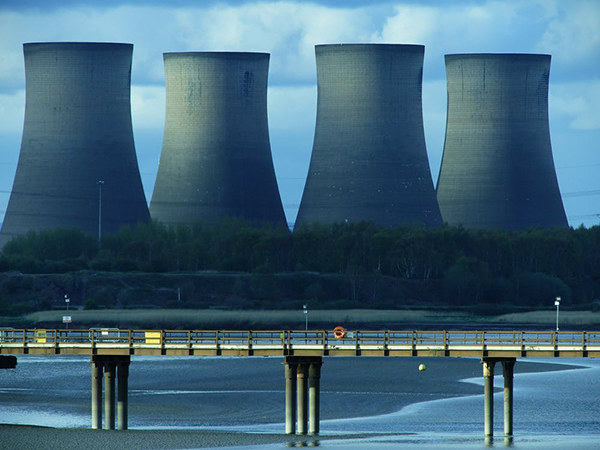All cooling towers remove waste heat from water or another substance that carries heat away from a facility before transferring the heat to the air. They are most often used to cool massive volumes of water, whether they’re cooling water used in industrial processes or as a form of air conditioning. This is why you see them on top of apartment buildings as well as several located around the average manufacturing plant. Here is everything you need to know about cooling towers.

The Main Types of Cooling Towers
Cooling towers can be categorized by how water or air pass through them. Passive draft cooling towers rely on natural air flow around the tower to cool the water. This may be done with a steep chimney design. Induced draft cooling towers are cooling towers that rely on air flow to cool the water but are not passive. They usually use a fan system to push air inside the tower. These are more efficient and can even be located inside of a building if it is well-designed.
The three other ways to categorize cooling towers are crossflow, counter-flow and hyperbolic. Crossflow cooling towers have a splash fill that lets air move in a horizontal stream over the water. These systems are popular because they’re the easiest to maintain, but they are vulnerable to frost and less efficient. Counter-flow cooling towers send incoming air in a vertical path over the splash fill. They tend to be smaller and more expensive, since more energy is required to move the air. However, they are more efficient in the long-run.
Hyperbolic cooling towers rely on a chimney stacking technique to move outside cooler air through the tower. The splash fill is on the bottom of the tower, and air is cooled by the upward flowing air. These towers are ideal for large-scale operations like power plants and big industrial facilities. This makes hyperbolic cooling towers passive draft systems.
The Role of Heat Exchangers in Cooling Towers
Heat exchangers may provide air to air, air to liquid cooling, liquid to air, and liquid to liquid cooling. The best cooling method depends on the fluids available for heat transfer and the conditions you’re operating in.
Liquids like water are often used to cool down hot equipment before the heat is removed from it via controlled air flow. This may be done on the micro level when a fan flows air over a liquid cooling system to keep an advanced computer core running. It can also occur on the macro level when massive volumes of air are blown through a cooling tower to cool process water before it is pumped back into the industrial facility.
You should explore various cooling solutions to find one that balances cost, thermal efficiency and size. You have to take a number of factors into account such as material compatibility, pressure drop and flow rate.
The Biggest Factors Affecting How Industrial Plants Cool Down
Environmental regulations are having a major impact on cooling tower selection and other equipment used, since modest improvements in energy efficiency quickly add up in industrial facilities. Market conditions can also determine what type of cooling system you use.
When clean water is expensive, scarce or unavailable, air cooled heat exchangers are used in place of the standard water cooling tower. While reclaimed water could be used, this introduces the risk of debris and particles clogging up the system, hurting plant productivity. However, businesses prefer to use water cooling where they can because it can get the water far cooler than a heat exchanger could.
Conclusion
While many cooling towers look the same, there are several different designs in regular use. The ideal cooling tower design for a particular project will depend on local constraints, economics and process requirements.




